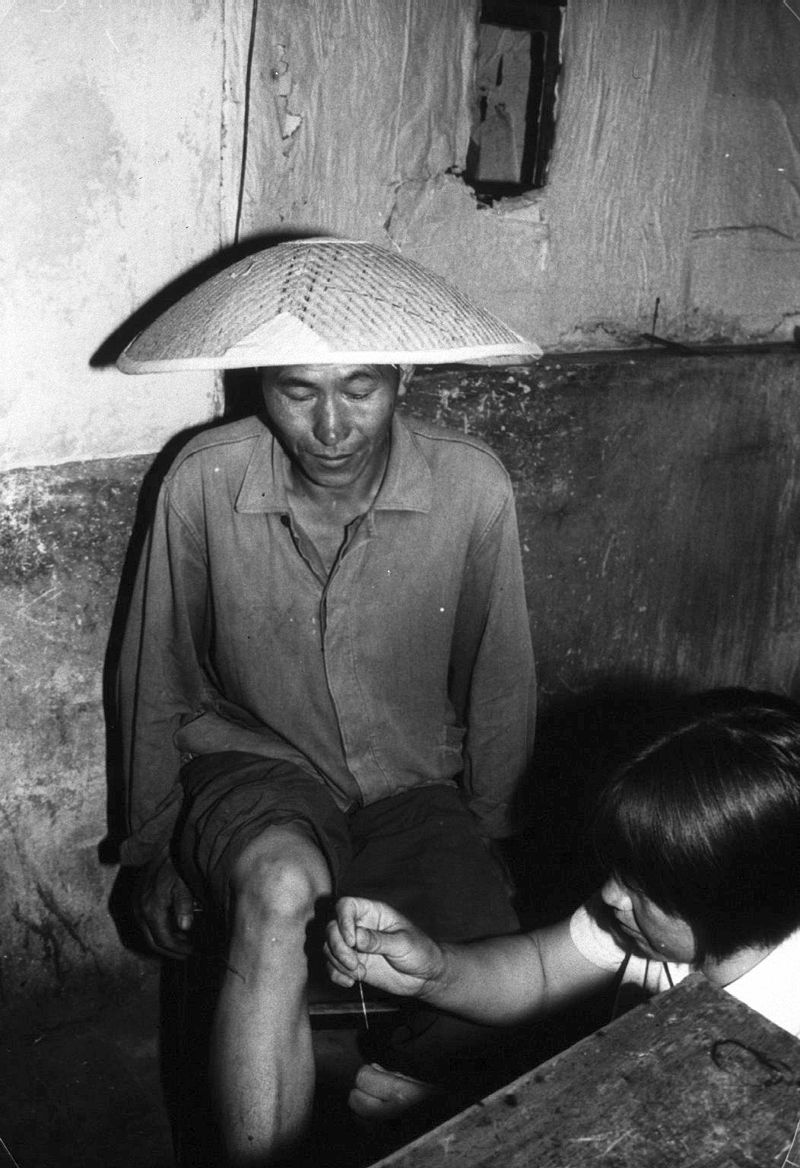|
|
| (2 intermediate revisions by 2 users not shown) |
| Line 1: |
Line 1: |
| [[File:BarefootDoctor.jpg|thumb|A barefoot doctor performs acupuncture on a man]] | | [[File:BarefootDoctor.jpg|thumb|A barefoot doctor performs acupuncture on a man]] |
| '''Barefoot doctors''' were healthcare providers who underwent basic medical training and worked in rural villages in [[China]]. They included farmers, folk healers, rural healthcare providers, and recent middle or secondary school graduates who received minimal basic medical and [[paramedic]]al education.<ref name=":4" /><ref name=":3" /><ref name=":15" /> Their purpose was to bring healthcare to rural areas where urban-trained doctors would not settle. They promoted basic [[hygiene]], [[preventive healthcare]], and [[family planning]] and treated common [[disease|illnesses]].<ref name=":16" /> The name comes from southern farmers, who would often work barefoot in the rice paddies, and simultaneously worked as medical practitioners.<ref name=":4" /> | | '''Barefoot doctors''' were doctors who treated impoverished farmers in rural villages in the [[People's Republic of China]] starting in the 1960s. They typically received only three to six months of training. |
|
| |
|
| In the 1930s, the [[Rural Reconstruction Movement]] had pioneered village health workers trained in basic health as part of a coordinated system, and there had been provincial experiments after 1949, but after Mao Zedong's healthcare speech in 1965 the concept was developed and institutionalized.<ref name=":14" /> China's [[health policy]] began to emphasize the importance of barefoot doctors after Mao Zedong's June 26 directive, and, in 1968, the barefoot doctors program became integrated into national policy.<ref name="zhang">{{cite journal|vauthors=Zhang D, Unschuld PU|date=November 2008|title=China's barefoot doctor: past, present, and future|journal=Lancet|volume=372|issue=9653|pages=1865–1867|doi=10.1016/S0140-6736(08)61355-0|pmid=18930539|s2cid=44522656}}
| | [[Category:Pages needing references]] |
| </ref> These programs were called "rural cooperative medical systems" (RCMS) and worked to include community participation with the rural provision of health services.<ref name="carrin">{{cite journal | vauthors = Carrin G, Ron A, Hui Y, Hong W, Tuohong Z, Licheng Z, Shuo Z, Yide Y, Jiaying C, Qicheng J, Zhaoyang Z, Jun Y, Xuesheng L | display-authors = 6 | title = The reform of the rural cooperative medical system in the People's Republic of China: interim experience in 14 pilot counties | journal = Social Science & Medicine | volume = 48 | issue = 7 | pages = 961–72 | date = April 1999 | pmid = 10192562 | doi = 10.1016/S0277-9536(98)00396-7 }}
| |
| </ref>
| |
| | |
| Barefoot doctors became a part of the [[Cultural Revolution]], which also radically diminished the influence of the [[Ministry of Health of the People's Republic of China|Ministry of Health]], which was filled with Western-trained doctors. Still, barefoot doctors continued to introduce scientific medicine to rural areas by merging it with [[traditional Chinese medicine|Chinese medicine]].<ref name=":4" /> With the onset of market-oriented reforms after the Cultural Revolution, political support for barefoot doctors dissipated, and "health-care crises of peasants substantially increased after the system broke down in the 1980s."<ref name="zhang" /> Despite the fact that the official barefoot doctor system came to an end, the legacy of the barefoot doctors inspired the 1978 [[World Health Organization]] conference on [[primary health care]] and the resulting [[Alma Ata Declaration]].<ref name=":1" />
| |
| | |
| == References ==
| |
